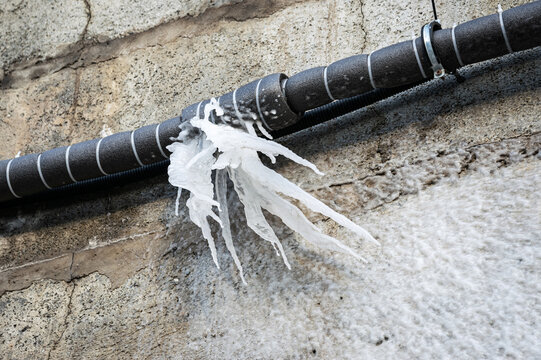Essential Tips for Preventing Frozen Pipes in Winter Seasons
Essential Tips for Preventing Frozen Pipes in Winter Seasons
Blog Article
Just how do you really feel in relation to 6 Ways to Prevent Frozen Pipes?

Winter can ruin your pipes, especially by freezing pipes. Here's how to stop it from taking place and what to do if it does.
Intro
As temperatures decrease, the risk of icy pipelines boosts, potentially bring about expensive repair work and water damages. Comprehending how to prevent icy pipes is crucial for house owners in cold environments.
Understanding Icy Pipes
What creates pipes to ice up?
Pipes ice up when exposed to temperature levels below 32 ° F (0 ° C) for prolonged durations. As water inside the pipes ices up, it increases, putting pressure on the pipeline walls and potentially triggering them to break.
Dangers and damages
Icy pipelines can result in supply of water disruptions, building damages, and costly repair services. Burst pipelines can flooding homes and cause comprehensive structural damage.
Indicators of Frozen Pipes
Recognizing frozen pipelines early can stop them from rupturing.
Just how to determine icy pipelines
Search for reduced water flow from taps, uncommon odors or sounds from pipes, and visible frost on revealed pipelines.
Prevention Tips
Protecting vulnerable pipelines
Cover pipes in insulation sleeves or utilize heat tape to protect them from freezing temperature levels. Concentrate on pipes in unheated or exterior locations of the home.
Heating strategies
Maintain interior spaces effectively heated up, especially areas with pipes. Open closet doors to enable cozy air to distribute around pipelines under sinks.
Safeguarding Exterior Pipes
Garden pipes and outside faucets
Separate and drain yard hoses before winter months. Install frost-proof faucets or cover outdoor faucets with shielded caps.
What to Do If Your Pipes Freeze
Immediate actions to take
If you believe icy pipes, keep taps open up to alleviate pressure as the ice thaws. Use a hairdryer or towels soaked in hot water to thaw pipes gradually.
Long-Term Solutions
Architectural changes
Take into consideration rerouting pipes away from outside walls or unheated locations. Include extra insulation to attics, cellars, and crawl spaces.
Updating insulation
Buy high-quality insulation for pipes, attic rooms, and wall surfaces. Correct insulation aids preserve constant temperature levels and minimizes the danger of frozen pipes.
Verdict
Preventing icy pipes requires proactive actions and fast reactions. By understanding the causes, indicators, and preventive measures, property owners can shield their pipes during winter.
5 Ways to Prevent Frozen Pipes
Drain Outdoor Faucets and Disconnect Hoses
First, close the shut-off valve that controls the flow of water in the pipe to your outdoor faucet. Then, head outside to disconnect and drain your hose and open the outdoor faucet to allow the water to completely drain out of the line. Turn off the faucet when done. Finally, head back to the shut-off valve and drain the remaining water inside the pipe into a bucket or container. Additionally, if you have a home irrigation system, you should consider hiring an expert to clear the system of water each year.
Insulate Pipes
One of the best and most cost-effective methods for preventing frozen water pipes is to wrap your pipes with insulation. This is especially important for areas in your home that aren’t exposed to heat, such as an attic. We suggest using foam sleeves, which can typically be found at your local hardware store.
Keep Heat Running at 65
Your pipes are located inside your walls, and the temperature there is much colder than the rest of the house. To prevent your pipes from freezing, The Insurance Information Institute suggests that you keep your home heated to at least 65 degrees, even when traveling. You may want to invest in smart devices that can keep an eye on the temperature in your home while you’re away.
Leave Water Dripping
Moving water — even a small trickle — can prevent ice from forming inside your pipes. When freezing temps are imminent, start a drip of water from all faucets that serve exposed pipes. Leaving a few faucets running will also help relieve pressure inside the pipes and help prevent a rupture if the water inside freezes.
Open Cupboard Doors
Warm your kitchen and bathroom pipes by opening cupboards and vanities. You should also leave your interior doors ajar to help warm air circulate evenly throughout your home.

I found that piece of writing on Helpful Tips to Prevent Frozen Pipes this Winter while doing research the search engines. So long as you liked our page please remember to pass it around. We value your readership.
Need Help? Hire Us Now! Report this page